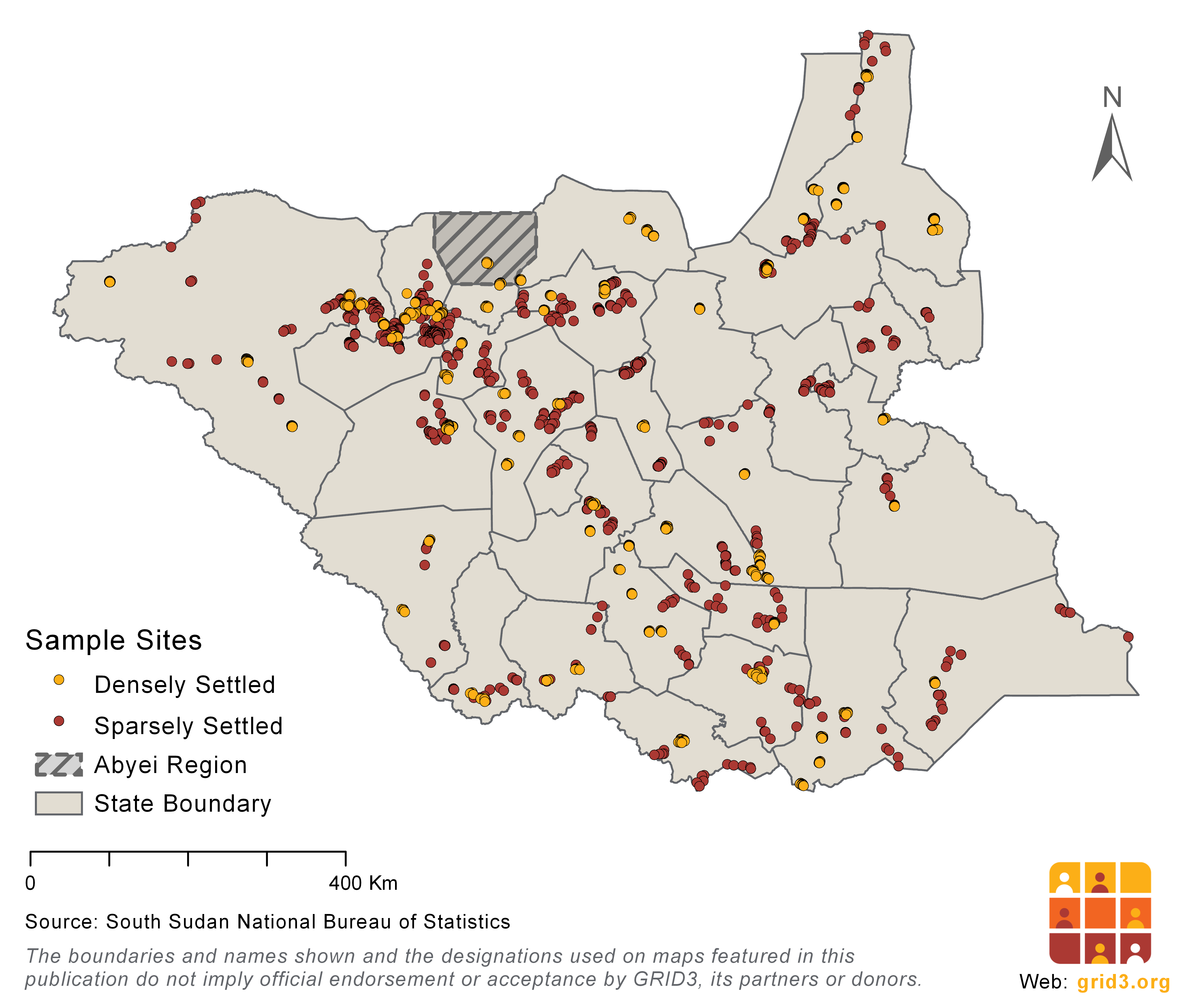South Sudan’s microcensus marks an important first step in campaign to leave no one behind
On 24 May, field data collection began for South Sudan’s National Population Estimation Survey (PES), an important milestone in the country’s effort to collect baseline demographic and socioeconomic data. Information collected for the survey can be used to guide policy formulation, development planning, service delivery, and infrastructure investments. GRID3 has provided South Sudan’s National Bureau of Statistics (NBS) extensive technical, logistical, and administrative support for the PES.
Up to now, the most recent official population data for South Sudan were found in the Sudan Population and Housing Census of 2008, which was conducted prior to South Sudan’s independence in 2011. In the years since, political conflict and linked population movements have rendered the 2008 numbers outdated, and there is an urgent need for up-to-date, accurate, relevant demographic data that can be used to inform the country’s development agenda. South Sudan’s government and GRID3 identified the PES as an important way to begin collecting these data.
In early 2019, GRID3 organised an exploratory mission to South Sudan to see how the programme could contribute its expertise on geospatial data to the country’s development efforts; it was decided that a microcensus would be a highly useful tool for government officials.
In a microcensus, the questionnaire is shorter and the survey covers a smaller number of households than a full national census. The data gleaned from these interviews are combined with data from high-resolution satellite imagery into a statistical model that uses a “bottom-up” approach (which estimates population numbers in un-sampled areas). A microcensus is a fast, relatively inexpensive approach to obtaining a solid demographic picture of the entire country.
Preparatory work, led by the United Nations Population Fund (UNFPA), began in 2019 for the PES. A series of important benchmarks were met: a National Technical Committee and National Steering Committee were established under the stewardship of NBS; a technical proposal (including a detailed roadmap and budget) was completed; the survey’s design, methodology, and training materials were finalised; sampling design and selection were agreed for sample sites and reserve sites; high-resolution satellite imagery was procured and shared with NBS for delineating survey maps; and buy-in from the government was obtained, leading to approval of the survey by James Wani Igga, Vice President of the Republic.
Representatives from NBS participate in the sample site delineation exercise held in Juba, December 2020.
The pre-survey phase began in mid-2020 and continued through 2021. UNFPA held consultations with government stakeholders from the national level down to the lowest administrative levels (payams and bomas) to increase awareness around the benefits of a microcensus. Data collection tools were pre-tested by the field teams so that they could familiarise themselves with the flow of the questionnaire. UNFPA and NBS worked together to hire and deploy field staff to 22 training centres, and survey instruments (tablets, control forms, and training materials) were distributed. Overall, a total of 1,536 sample sites were randomly selected in all states and counties.
Sample site map for the Population Estimation Survey.
In the coming weeks, enumerators will administer a short questionnaire to households in the sampled population. This questionnaire covers basic information such as demographic characteristics, household characteristics, migration, education, disability, marital status, health facility service delivery, economic characteristics, and access to/use of information and communications technology. The survey has been designed to improve understanding of gender dynamics in the country; for example, knowing the number of women of child-bearing age who live in a certain area, deaths in a family, and maternal deaths will help to determine where maternal and child care services are needed. Quality assurance teams are spread throughout South Sudan and will be working closely with the field data teams to check on completeness, survey ethics, interviewing patterns, and protocol adherence.
“NBS and GRID3’s joint efforts to incorporate geo-referenced demographic data in this survey represents an important step forward in South Sudan’s drive to make sure that every person in the country is counted,”
says Charles Mona, Director of GIS at NBS.
The survey will take some three weeks to administer; after it is completed, the post-enumeration phase will begin. During this final phase, GRID3 will support data processing by refining the microcensus analysis/modelling plan and cleaning the data. An exploratory analysis and basic model fitting will also be undertaken. Population modelling will be performed, as will data interpretation and discussions for inputs and planning, followed by the release of the population estimates in partnership with NBS.
In addition to providing population estimates to be used for the full population and housing census the country plans to hold in the coming years, the PES has many potential long-term benefits. The resulting gridded population estimates will increase the availability, accessibility, and utilisation of reliable data on population size and basic demographic characteristics, and these estimates can in turn be used to inform service delivery (including immunisation, school enrolment, and humanitarian assistance).
“Current, reliable population data is crucial for South Sudan to achieve many of the indicators under the Sustainable Development Goals,”
says Wellington Mbithi, GRID3 Technical Specialist at UNFPA.
“We are part of a huge global effort to ensure that every country can track its progress toward an inclusive, equitable future.”


